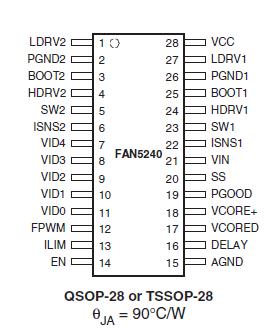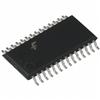FAN5240: Features: • CPU Core power: 0.925V to 2.0V output range• ±1% reference precision over temperature• Dynamic voltage setting with 5-bit DAC• 5V to 24V input voltage range•...
floor Price/Ceiling Price
- Part Number:
- FAN5240
- Supply Ability:
- 5000
Price Break
- Qty
- 1~5000
- Unit Price
- Negotiable
- Processing time
- 15 Days
SeekIC Buyer Protection PLUS - newly updated for 2013!
- Escrow Protection.
- Guaranteed refunds.
- Secure payments.
- Learn more >>
Month Sales
268 Transactions
Payment Methods
All payment methods are secure and covered by SeekIC Buyer Protection PLUS.

 FAN5240 Data Sheet
FAN5240 Data Sheet








